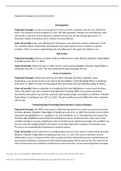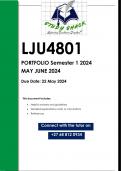Resumen
Summary Keuzevak Infectieziekten pre-master Health Sciences blok 7
- Grado
- Institución
- Book
Hierbij de samenvattingen van het keuzevak infectieziekten van de pre-master Health Sciences aan de VU. Met de totale samenvattingen haal je een goed cijfer voor het tentamen infectieziekten.
[Mostrar más]













